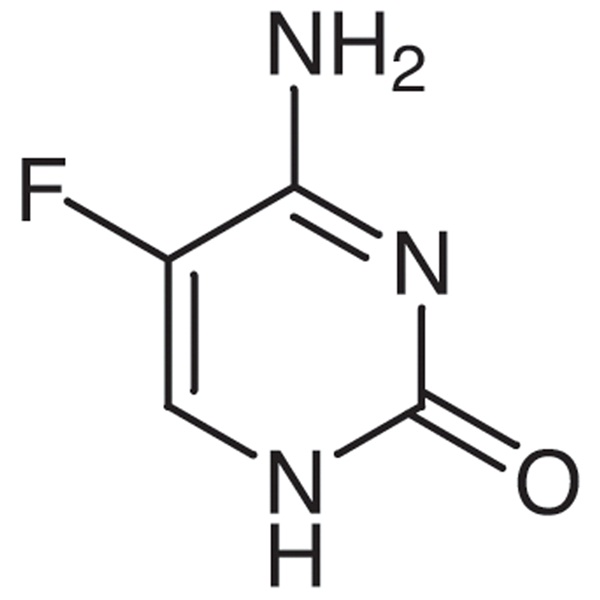Chemical Properties:
Package: Bottle, Aluminum foil bag, Cardboard drum, 25kg/Drum, or according to customer's requirement. Storage Condition: Store in sealed containers at cool and dry place; Protect from light, moisture and pest infestation.Commercial Supply Capecitabine Related Intermediates: 5-Fluorocytosine CAS: 2022-85-7 2',3'-Di-O-acetyl-5'-deoxy-5-fluorocytidine CAS: 161599-46-8 1,2,3-Tri-O-acetyl-5-deoxy-β-D-ribofuranose CAS: 62211-93-2 Capecitabine CAS: 154361-50-9| Item | Specifications |
| Appearance | White or Almost White Crystalline Powder |
| Identification IR | The infrared absorption spectrum of the sample must be concordant with the standard spectrum |
| Purity / Analysis Method | ≥99.5% (HPLC) |
| Cytosine | ≤0.10% |
| Any Other Individual Impurity | ≤0.10% |
| Solubility | Sparingly Soluble in Water; Slight Soluble in Alcohol; Paractically in Chloroform and in Ether |
| Loss on Drying | ≤1.5% w/w (at 105℃ 4 h) |
| Residue on Ignition | ≤0.10% w/w |
| Heavy Metals (Pb) | ≤20ppm |
| Fluorinc | ≤500ppm |
| 5-Fluorouracil | ≤0.10% |
| Assay | 98.5%~101.0% (calculated on the dried basis) |
| Test Standard | Enterprise Standard |
| Usage | Capecitabine & Emtricitabine Intermediate; Pharmaceutical Intermediates |
| Upstream Product | Cytosine CAS: 71-30-7 |
Description:
Specifications:
Package & Storage:
| Name | 5-Fluorocytosine |
| Synonyms | 5-FC; Flucytosine; 4-Amino-5-fluoro-2-hydroxypyrimidine |
| CAS Number | 2022-85-7 |
| CAT Number | RF-PI175 |
| Stock Status | In Stock, Production Scale Up to Tons |
| Molecular Formula | C4H4FN3O |
| Molecular Weight | 129.09 |
| Brand | Ruifu Chemical |
Advantages:
FAQ:
Application:
Shanghai Ruifu Chemical Co., Ltd. is the leading manufacturer and supplier of 5-Fluorocytosine CAS: 2022-85-7 (Fluorocytosine; 5-FC) with high quality, widely used in organic synthesis, synthesis of pharmaceutical intermediates and Active Pharmaceutical Ingredient (API) synthesis. 5-Fluorocytosine (CAS: 2022-85-7) is the intermediate of Capecitabine (CAS: 154361-50-9) and Emtricitabine (CAS: 143491-57-0). 5-Fluorocytosine is a fluorinated analog of cytosine. 5-FC is approved by the U.S. Food and Drug Administration (FDA) as an antifungal agent used for the treatment of Candida and Cryptococcus. Lately with the development of gene therapy, 5-FC has been introduced as a prodrug in combination with the cytosine deaminase suicide gene.


